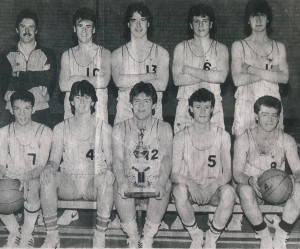The cost of bad recruitment on sales team performance.
Have you ever considered the cost of recruiting the wrong person on sales team performance?
Recruiting salespeople and sales leaders is one of the most critical decisions a business can make— and one of the easiest to get wrong. In today’s competitive, performance-driven landscape, the margin for error is slim. Get it right and you accelerate growth. Get it wrong and you introduce risk, instability, and potentially long-term damage to your pipeline and culture.
What Does a Bad Sales Hire Actually Cost?
There are some financial hard truths to consider:
– According to the Recruitment & Employment Confederation (REC), a bad hire at mid-manager level can cost a UK business over £30,000. For a sales role, that number can double when you factor in lost revenue, lost time, reputational damage and re-recruitment fees.
– The Society for Human Resource Management (SHRM) puts the cost of replacing a salaried employee at six to nine months’ salary.
– Poor sales hires often go unnoticed for months — and every month of underperformance impacts pipeline, forecasting, and team morale.
But the financial hit is only part of the picture:
– Missed targets create downstream pressure on marketing, operations, and finance.
– Demotivated teams who carry the weight of underperforming colleagues.
– Customer relationships suffer when salespeople are misaligned, untrained, or simply not cut out for the role.
Why Sales Recruitment Fails
Sales hiring fails for many of the same reasons as general recruitment — but with higher stakes:
- Confusing Activity with Ability – Past results don’t always translate across industries or cultures.
- Overvaluing Charisma – Interview performance is not sales performance.
- Hiring for Pipeline, Not Fit – Urgency to fill gaps overrides strategic fit.
- Undefined Expectations – No clarity around territory, targets, or sales process.
- Weak Onboarding – Salespeople are expected to “hit the ground running” without the support to do so.
- In search of the ‘Black Book’ – recruiting sales people based on the potential of a book of contacts from within an industry.
For sales managers, the risks are magnified:
– Misalignment with company strategy.
– Inability to coach or inspire teams.
– Poor forecasting and data hygiene.
– Resistance to adopting process or CRM discipline.
The Real-World Consequences
When a salesperson or sales manager is a bad fit, the cost spreads wide:
– Deals stall or die due to poor qualification and follow-up.
– Customers churn from mismatched promises and poor handovers.
– Sales cycles lengthen, forecasts become unreliable.
– Team culture erodes, especially if performance issues are ignored.
– High performers leave, especially when they see mediocrity rewarded or tolerated.
How to Get Sales Recruitment Right
It takes more than a gut feeling or quick CV scan. It requires structure, strategy, and an understanding of the kind of performance that drives your business.
1. Define Success First
– What will this person be responsible for in their first 90 days?
– What leading indicators will show they’re succeeding?
– Where does this role fit in the wider commercial strategy
2. Structured Hiring Process for Sales Roles
– Use sales-specific simulations or roleplays.
– Assess coachability, resilience, and curiosity — not just experience.
– Interview against values as much as quotas.
– For managers: probe on leadership style, coaching experience, and data literacy.
3. Strong Onboarding and Ramp-Up Plan
– Provide tools, messaging, ICP training, and shadowing.
– Set clear activity expectations linked to leading indicators.
– Monitor engagement closely in the first 30, 60, 90 days.
Salespeople who experience structured onboarding reach productivity 50% faster and are more likely to stay beyond 12 months. (CSO Insights)
4. Coach Relentlessly
– Equip frontline managers to lead 1:1s, pipeline reviews, and call coaching.
– Create weekly rhythm: learning, reflection, performance check-ins.
5. Make Culture a Performance Driver
– Build a culture where feedback, resilience, and continuous learning are non-negotiables.
– Celebrate the behaviours that lead to success, not just results.
6. Learn From Mistakes
– Analyse performance of past hires — who succeeded and why?
– Review exit interviews for patterns.
– Use insights to refine job profiles, onboarding, and enablement.
7. Get a good copywriter
– don’t keep on using the same recruitment advertisement…the one you pull out every 18 months or so
– be confident about the salary, package and bonus. Available on request doesn’t cut it anymore.
– spend as much time on your EVP (employee value proposition) as your CVP
8. Use a sales specialist recruitment agency
– “Using recruitment agencies to get salespeople is real value for money.” Said no business owner, ever. If you can brief the market properly, you can brief a recruitment agency properly too. There are some really good agencies in the marketplace, you just ened to find them.
Recruiting the right salespeople and managers is less about finding unicorns and more about building a repeatable, insight-led hiring process. It takes discipline, investment, and cultural clarity.
Doing it right, takes time too.
The cost of getting it wrong? Lost revenue, disengaged teams, and frustrated customers.
The benefit of getting it right? Predictable growth, stronger relationships, and a sales culture that drives lasting success.
If you’re ready to improve your sales team performance and leadership development, drop me an email; paul@shift-control.co.uk







